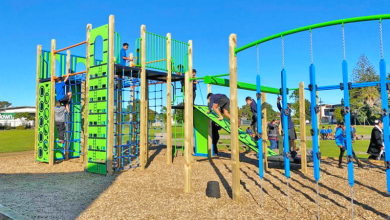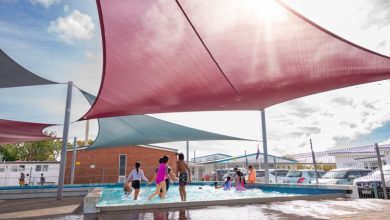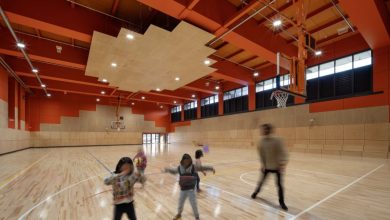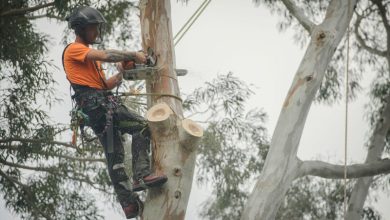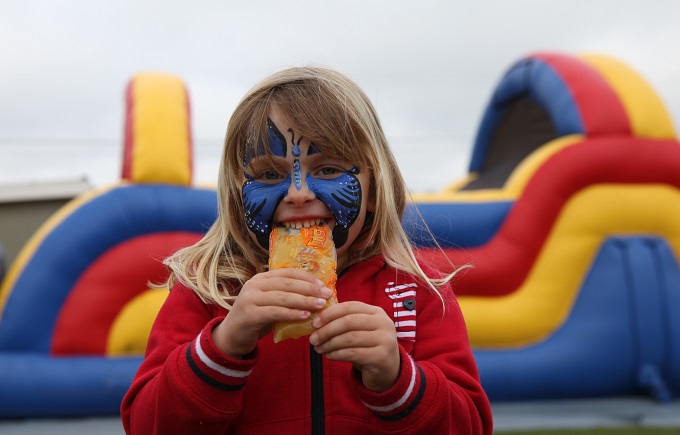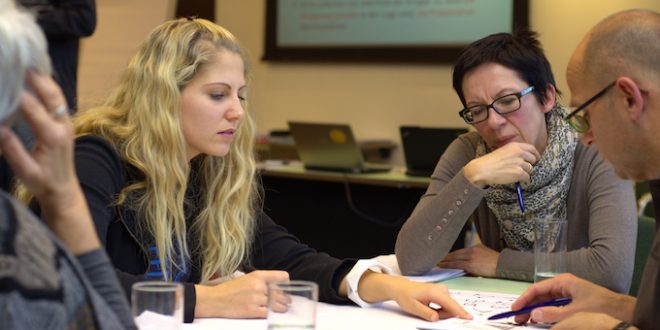Planning the playground for ultimate learning
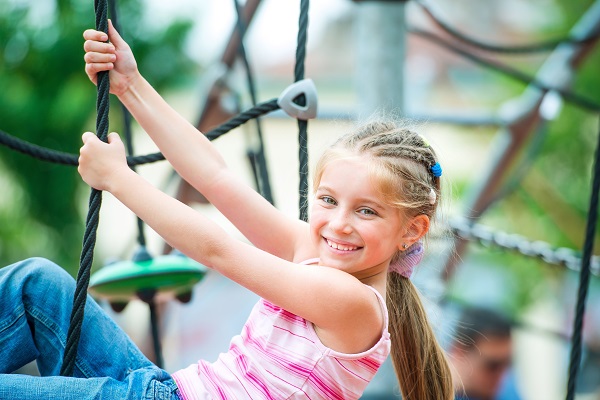
Educators recognise that children do their most important work through play, which means planning a school playground involves a series of important pedagogical decision.
The school playground is an act of town planning in miniature. The space must support the social interaction of humans, yet, because the end users of this space are still forming their characters, they have specifications of this project are somewhat specialised.
They are on a steep learning curve about power relations and the role of status in society, while developing skills like cooperation, respecting the space of others, and the holy grail of empathy and compassion. Playgrounds should facilitate this social cohesion, by allowing flow and movement, exit and entrance, as well as challenge to stimulate young minds.
Teachers know exactly where boredom and frustration leads. One long bus trip is enough to impress that indelible lesson on an educator’s psyche. The playground must give room for exploration, offer visible and manageable risks, and promote a positive flow of play to minimise traffic jams and conflict. So, if this is what children need from a playground, what do they want?
According to an article titled ‘Children Create the Playground of Their Dreams’ on Edutopia Online, when a charity funded and executed project in a low-SES school in Seattle they discovered what children want. They want fantasy, imagination and action in their playgrounds, and they have ideas about what that looks like. Students were invited to submit design ideas, with requests ranging from equipment that swirls you around “until you get dizzy” and structures crowned with flags (“more like a castle than a fort”), to approximations of water slides and roller coasters.
While children may not always err on the side of realism, they do have some terrific ideas, and it is the students, after all, who shimmy, bend, swing and twirl their break times away on poles, slides, platforms and swings.
The Seattle project leaders found the children were happy to have their ideas considered and implemented where possible, rationalised when impossible, or even respectfully dismissed. Dared by their carers to dream, the children realised plenty of their visions, but also gained a valuable skill: to modify their plans when reality bites.
However the visioning process unfolds, a playground designer will advise on the features, materials and designs required to craft a play space that provides challenging fun, in a safe and harmonious environment, while remaining affordable for schools.
‘Playground artist’ Günter Beltzig is 75 years old and probably still swinging from the monkey bars he designs. He has written books on playground design, and created play spaces all around Europe, and more recently, as far from his Bavarian home as Australia.
To Günter Beltzig, play means “activities that individuals undertake to adapt to their environment”, in other words, play is the opportunity to try out all possibilities, to test the limits, gather experience and learn. If Mr Beltzig is right, and I suspect that he is, then planning a school playground has a much higher purpose, and more complexity to it than the uninitiated might realise.
Mr Beltzig works by some principles of play space design, and in 2012, he shared his wisdom with The Guardian, in an article named ‘How to design the perfect playground’.
He says a playground should “have an atmosphere that invites people to linger” and “give room for exploration”; this means leaving some aspect of the playground open to interpretation. Mr Beltzig says a playground should “offer visible, manageable risks, as playing is all about testing and transcending one’s limits”, but also allow “an alternative route” so the child can retreat without losing face. He advised a successful playground has to cater for different abilities, moods, personalities and modes of play, so should not be one central structure.
The Ministry of Education (MoE) takes the view that a school is best placed to select an environment for play that best suits their learners. It’s worth investigating the MoE guidelines to see what’s possible, some might be surprised at the seemingly high-risk equipment that is approved for avid players to ‘test and transcend their limits’.
Directing the flow of play
Bottlenecks and traffic jams on play equipment can lead to pushing, shoving or worse. Playgrounds with multiple entry and exit points and route design that keeps children moving alleviates many frustrations. Placing exits at multiple intervals also allows students to save face and seek an ‘out’ if they feel challenge ahead is beyond them.
While schools often provide separate spaces for junior and senior students, combined playgrounds are possible and just require a few key adjustments to ensure safety and varied ability levels. With careful planning, one circuit can service several age groups by placing challenging transitions between height levels, so if a child is not ready for something, they can’t get to it.
Climbing: safe, challenging and fun
Climbing is both popular with children and healthy for physical development. Our ancestors stretched, lunged, and hauled their own weight onto ledges many times a day. The relative immobility of modern humans and the small range of movements our lives necessitate is not doing our bodies any favours.
Web structures with graduated heights facilitate multi-age access, and are governed by height regulation to ensure the fall height is not disastrous if mishap occurs.
Flooring
Safety considerations extend to floor surfacing, and options include mulch, rubber, synthetic turf and sand. Mulch is a cheaper alternative, yet regular maintenance is required, though, this work is often tackled during school working bees.
With an increase in risk aversion and subsequent regulation, playground designers are meeting the challenge of creating safe equipment that offers physical challenge, not to mention a bit of a thrill now and then.
As it is with most children’s activities these days, it’s a matter of protecting the children in your care by adhering to government regulations on safety and quality. Students need to challenge themselves, and measures such as soft rubber flooring, age-appropriate climbing heights and quality materials can allow them to do stretch their own limits and gain confidence with the safety net of careful compliant design.
Safety, fun, adequate opportunity for challenge through visible risks at a manageable level, and thoughtfully planned flow of play are among the recommendations for a school playground to remember.


